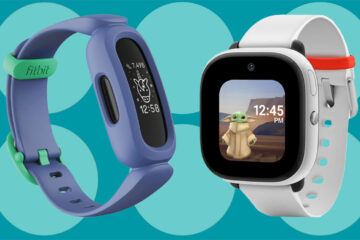In today’s digital age, the way we consume media has undergone a significant transformation. Gone are the days of physical CDs and DVDs; now, we have two primary methods of accessing content: streaming and downloading. Both have their advantages and disadvantages, and the choice between them often depends on individual preferences and needs. In this comprehensive article, we will delve into the world of streaming and downloads to determine which is the better option for you.
In a world filled with digital content, the battle between streaming and downloads rages on. Each method has its own unique features, advantages, and drawbacks, and choosing between them can be a daunting task. To help you make an informed decision, we’ll break down the differences between streaming and downloads in various aspects.
Definition and Benefits of Streaming
What is Streaming?
Streaming is the process of accessing and playing digital media content over the internet in real-time. Whether it’s music, movies, TV shows, or games, streaming allows you to enjoy content without having to download it to your device. When you stream, you’re essentially watching or listening to content as it’s transmitted from a remote server to your device. This eliminates the need for large storage space on your device and ensures that you can access a vast library of content without worrying about storage limitations.
Advantages of Streaming
- Instant Gratification: With streaming, you can start watching or listening to content immediately without waiting for downloads to finish. This instant access is perfect for those spontaneous movie nights or when you just can’t wait to hear a new song.
- No Storage Limitations: Streaming doesn’t require storage space on your device since the content is hosted on remote servers. This means you can enjoy a vast library of movies, music, and TV shows without worrying about running out of space on your smartphone or computer.
- Regular Updates: Streaming services often offer a vast library of content that is regularly updated with new releases. This ensures that you always have access to the latest movies, TV episodes, and songs without having to purchase or download them individually.
- Multi-Device Accessibility: You can access your streaming content on multiple devices with the same account. Whether you’re at home, at work, or on the go, you can switch between your smartphone, tablet, smart TV, and laptop seamlessly.
Definition and Benefits of Downloads
What are Downloads?
Downloads involve saving digital media files directly to your device’s storage, allowing you to access and use them offline without an internet connection. When you download content, you’re essentially creating a copy of the file on your device’s storage, making it accessible whenever you want, even without an internet connection. This method is particularly beneficial for those who frequently find themselves in areas with poor or no internet connectivity.
Advantages of Downloads
- Offline Access: Downloaded content can be accessed without an internet connection, making it ideal for travel or areas with poor connectivity. Whether you’re on a long flight or camping in a remote location, downloaded movies, music, and e-books are your entertainment saviors.
- Quality Control: When you download content, you have the freedom to choose the quality and format of the files. This ensures that you get the best possible experience, especially if you’re an audiophile or a cinephile who values high-definition content.
- Ownership: Downloaded content is owned outright, meaning you can keep it indefinitely. Unlike streaming, where access is tied to a subscription or service, downloaded files are yours to keep. This is particularly advantageous for those who want to build a personal library of their favorite content.
- No Data Usage: Downloads don’t consume data once the content is saved to your device. This is a significant advantage for individuals with limited data plans or those who want to avoid data overage charges.
In the following sections, we’ll continue to explore the differences between streaming and downloads in more detail, addressing factors such as quality and accessibility, cost considerations, offline viewing capabilities, content availability, data usage, device compatibility, ease of use, security and privacy, long-term access, and environmental impact. By the end of this article, you’ll have a comprehensive understanding of which method suits your preferences and lifestyle best.
Quality and Accessibility
Streaming Quality
One of the primary considerations when choosing between streaming and downloads is the quality of the content. Streaming quality can vary depending on your internet connection speed and the capabilities of the streaming service. When you have a strong and stable internet connection, streaming platforms often deliver high-quality content, including high-definition (HD) and even 4K resolution. However, the quality can degrade if your internet connection is slow or if you’re sharing bandwidth with multiple devices. Buffering and lower resolution can be frustrating when streaming, especially during peak usage times or in areas with limited internet infrastructure.
Downloaded Content Quality
On the other hand, downloaded content is typically available in the highest quality offered by the provider. When you download a movie, music album, or e-book, you have control over the format and resolution. This ensures a consistent viewing or listening experience regardless of your internet connection. If you’re a cinephile who wants to enjoy movies in the best possible quality or an audiophile who values crystal-clear sound, downloads are often the preferred choice.
Also Read: How Much Ram Do You Need For Streaming
Cost Considerations
Subscription Costs
Streaming services often require monthly or annual subscriptions, which grant you access to their entire library of content. While many of these services offer free trials, you’ll eventually need to pay for continued access. Subscription costs can add up if you subscribe to multiple streaming platforms, especially if they each offer exclusive content. However, the subscription model does provide unlimited access to a wide range of media.
Per-Content Costs
In contrast, downloads may involve one-time purchase fees or pay-per-content models. For example, you might pay a fixed price to buy a movie, a music album, or an e-book. While this may seem cost-effective if you only want specific content, it can become expensive if you have a voracious appetite for media. Some streaming platforms also offer premium content that requires an additional fee, so it’s essential to consider your budget and consumption habits when deciding between streaming and downloads.
Offline Viewing
Streaming usually requires a stable internet connection, which means you can’t access your favorite content offline. This limitation can be frustrating, especially when you’re traveling, commuting, or in areas with unreliable or no internet access. However, streaming services have recognized this issue and now offer offline viewing options for some content. You can download select movies or TV episodes to your device for later offline enjoyment, but these downloads often come with expiration dates, requiring periodic reconnection to the internet for verification.
On the other hand, downloaded content shines when it comes to offline viewing. Once you’ve downloaded a file, you can access it at any time, even without an internet connection. This feature is perfect for long flights, road trips, or remote vacations where reliable internet access is scarce. It ensures that you have entertainment at your fingertips, no matter where you are.
Content Availability
Streaming services offer a wide and ever-expanding range of content, including movies, TV shows, music, podcasts, and more. However, the availability of specific titles can vary by region due to licensing agreements. Additionally, streaming libraries can change over time as content licenses expire or new ones are acquired. This means that your favorite movie or TV series may be available one month but disappear from the platform the next.
Downloads provide more stability in terms of content availability. When you purchase and download media, you own it, and it remains accessible as long as you have the file stored on your device. This is particularly advantageous for individuals who have specific tastes or want to ensure they always have access to their favorite content, regardless of changes in licensing agreements.
In the subsequent sections, we will continue to explore the differences between streaming and downloads, covering topics such as data usage, device compatibility, ease of use, security and privacy, long-term access, and the environmental impact of each method. By the end of this article, you’ll have a comprehensive understanding of which option aligns best with your preferences and needs.
Data Usage
Streaming Data Usage
One critical factor to consider is data usage, especially for those with limited data plans or in regions where high-speed internet is expensive. Streaming consumes data in real-time, which means that every minute of video or audio playback contributes to your monthly data usage. Streaming in high definition or 4K can quickly eat into your data allowance, leading to unexpected overage charges.
Data Usage with Downloads
Downloads have a significant advantage in this regard. Once you’ve downloaded content, it doesn’t consume data when you play it back. This makes downloads an excellent choice for individuals who want to enjoy their media without worrying about data usage. Whether you’re watching movies on your daily commute or listening to music during a road trip, downloaded content allows you to stay entertained without the fear of exceeding your data cap.
Device Compatibility
Streaming services are designed to be compatible with a wide range of devices, including smartphones, tablets, smart TVs, gaming consoles, and computers. As long as you have an internet connection and the relevant app or web browser, you can access your favorite streaming content. This versatility is convenient for users who switch between different devices regularly.
On the other hand, downloaded content is typically limited to the device on which it is stored. While you can transfer files between devices, this process can be cumbersome and may not always be supported by the content provider. If you have multiple devices and want seamless access to your media library across all of them, streaming may be the more convenient choice.
Ease of Use
Streaming is known for its user-friendly approach. There’s no need for manual file management or worrying about available storage space. You can simply search for your desired content, click play, and start enjoying it instantly. This ease of use makes streaming a popular choice for individuals who prefer a hassle-free experience.
Conversely, downloads require more hands-on management. You need to ensure you have enough storage space for your files, organize them, and keep track of what you’ve downloaded. While some users enjoy the control and ownership that downloads offer, others may find it cumbersome, especially if they have a large library of downloaded media to manage.
Security and Privacy
Security and privacy are significant concerns in today’s digital landscape. When streaming, you rely on the security measures and data handling practices of the streaming service provider. While reputable platforms prioritize user data protection, there is always some level of risk associated with online streaming, such as data breaches or unauthorized access to your viewing history.
Downloads offer more control over your content’s security and privacy. Since the files are stored locally on your device, you have direct oversight of their protection. You can employ encryption or other security measures to safeguard your downloaded media. However, keep in mind that you are responsible for ensuring the security of your device and any downloaded files.
Long-Term Access
The longevity of your access to media is a crucial consideration. With streaming, your access to content depends on the availability of the service. If a streaming platform discontinues a particular show or movie, you lose access to it. Additionally, if you decide to cancel your subscription, you’ll lose access to the entire library.
Downloads provide long-term access as long as you keep the files stored on your device. You don’t have to worry about the content disappearing from your library due to licensing changes or subscription cancellations. This long-term ownership aspect of downloads is appealing to individuals who want to build a digital media collection that lasts.
Environmental Impact
The environmental impact of your media consumption choices is increasingly relevant in today’s eco-conscious world. Streaming services rely on vast data centers that consume significant amounts of energy. The constant data transmission and storage maintenance contribute to carbon emissions. While some streaming providers are taking steps to reduce their environmental footprint, the impact remains a concern.
Downloads, once stored on your device, have a lower ongoing environmental impact. They don’t require constant data center energy usage for streaming. However, the production and distribution of the devices used for downloads also contribute to environmental impact. Making eco-conscious choices in your media consumption, such as reducing streaming quality or opting for downloads, can contribute to a more sustainable digital lifestyle.
In conclusion, the choice between streaming and downloads is multifaceted and depends on various factors, including your internet connectivity, budget, data usage, device preferences, and environmental considerations. Whether you opt for the convenience and variety of streaming or the control and ownership of downloads, the digital world offers options tailored to your needs. As technology continues to evolve, so too will the landscape of media consumption, offering new possibilities and challenges for users. Ultimately, the decision lies with you, and it should align with your unique preferences and values.
Conclusion
The world of digital media consumption is diverse, offering a multitude of options to cater to varying preferences and needs. Streaming and downloads each have their strengths and weaknesses, making them suitable for different situations. The choice between the two ultimately depends on your individual circumstances and priorities.
In summary, streaming excels in offering instant access to a vast library of content, easy cross-device compatibility, and hassle-free usage. It’s a fantastic choice for those who value variety, spontaneity, and the latest releases. However, it comes with considerations like data usage, potential quality fluctuations, and reliance on ongoing subscriptions.
Downloads, on the other hand, provide control over content quality, offline access, long-term ownership, and lower data usage. This makes downloads a preferred option for individuals who prioritize high-quality, offline viewing, and those concerned about data costs. However, it requires more manual management and may not offer the same level of variety as streaming.
Frequently Asked Questions (FAQs)
Q1: Is streaming or downloading better for low-speed internet connections?
A1: Downloads are generally preferable for low-speed connections as they allow offline access without reliance on real-time streaming.
Q2: Can I download content from streaming services for offline viewing?
A2: Some streaming platforms offer the option to download select content for offline viewing. Check with the specific service for details.
Q3: Are downloads more cost-effective than streaming subscriptions?
A3: The cost-effectiveness depends on your consumption habits. For occasional viewers, downloads may be more cost-effective, while heavy consumers may find streaming subscriptions more economical.
Q4: How can I ensure the security of downloaded content?
A4: To secure downloaded content, employ encryption and password protection for your device. Ensure regular backups to prevent data loss.
Q5: Which option is more eco-friendly, streaming, or downloads?
A5: Downloads have a lower ongoing environmental impact since they do not rely on constant data center energy usage. However, both options have environmental considerations, and making conscious choices, such as reducing streaming quality, can help reduce your digital carbon footprint.
In conclusion, the debate between streaming and downloads will continue to evolve as technology advances. Both methods have their merits, and the right choice for you depends on your specific circumstances and preferences. Whether you opt for the instant gratification of streaming or the ownership and offline access of downloads, the digital world offers something for everyone. So, which side are you on?




